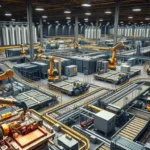In today’s digital age, software powers nearly every aspect of our daily lives. From sending emails to streaming movies, playing video games, or even controlling smart home devices, software is the invisible engine behind the technology we rely on. But have you ever wondered how software actually works? Let’s take a journey behind the scenes of digital technology.
What Is Software?
Software is a set of instructions that tells a computer or digital device what to do. Unlike hardware, which is the physical component of a computer (like your CPU, RAM, or hard drive), software is intangible—it exists as code written in programming languages.
There are two main types of software:
-
System Software – This includes operating systems like Windows, macOS, and Linux. It manages the hardware and provides a platform for other software to run.
-
Application Software – These are programs designed to perform specific tasks, such as Microsoft Word, web browsers, or mobile apps.
How Software Communicates with Hardware
At the core of software is communication with hardware. Computers can only understand machine language (binary code: 0s and 1s). Here’s the process:
-
High-Level Code – Developers write code in languages like Python, Java, or C++. These are human-readable instructions.
-
Compilation or Interpretation – High-level code is converted into machine code using a compiler (for compiled languages like C++) or interpreter (for interpreted languages like Python).
-
Execution by CPU – The machine code instructs the CPU on how to perform tasks, from simple calculations to complex operations.
-
Input and Output – Software receives input from users (keyboard, mouse, touchscreen) and sends output (display on screen, sound, or network communication).
Behind the Scenes: How Software Performs Tasks
When you click on an app or open a website, multiple processes happen almost simultaneously:
-
User Interaction – You send a request, such as clicking a button.
-
Processing – The software’s code is executed step by step. It might check databases, perform calculations, or request data from the internet.
-
Memory Management – Software temporarily stores data in RAM to speed up tasks.
-
Output Rendering – The processed data is displayed on your screen or used to perform an action.
-
Background Operations – Software often runs background tasks like updates, syncing data, or checking security, without the user noticing.
Modern Software and Digital Technology
Modern software goes beyond simple tasks. It integrates with cloud computing, artificial intelligence (AI), and the Internet of Things (IoT). Here’s how:
-
Cloud Computing – Applications can run on servers across the world, enabling users to access them anywhere without heavy local hardware.
-
AI and Machine Learning – Software can now learn from data, make predictions, and automate complex processes.
-
IoT Integration – Devices like smart thermostats and wearable fitness trackers rely on software to communicate and operate efficiently.
Conclusion
Software is the invisible force driving our digital world. From simple apps to complex AI systems, understanding how software works gives us a glimpse into the immense coordination between code, hardware, and human input. Next time you swipe on your smartphone or click a mouse, remember—it’s software working silently behind the scenes, making technology truly magical.
If you want, I can also rewrite this article in Hindi for a Hindi tech blog or website. This could help reach a wider Indian audience.
Do you want me to do that?

